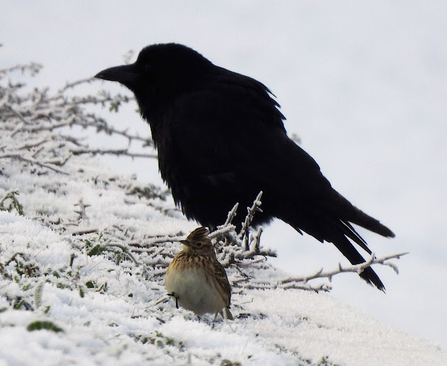
Skylark
Photo credit: @alanrevel
Common snipe (left) and jack snipe (right)
Photo credit: @rudraksh9

Skylark
Photo credit: @alanrevel
The cold spell began with a heavy frost on the 9th followed by four inches of snow falling two days later. Temperatures then stayed below freezing for the next week with the snow only beginning to melt late on the 18th. The dangers of frozen reservoirs and slippery paths inevitably led to the Wetlands being closed for a week with only permit holders, who agree to enter at their own risk, allowed access.
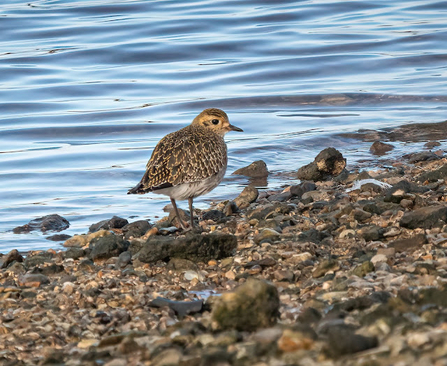
Golden plover
Photo credit: @EugeneDH_Bass
Surprisingly, the freeze did not displace as many wildfowl as hoped but did force the Lea Valley flock of barnacle geese to make a brief stop. Nineteen birds and the distinctive hybrid dropped in to No 4 on the 13th before being continuing east. Two had been seen from No 5 feeding on the playing fields on the 8th & 9th. Wigeon were also displaced by the snow with 14 in two flocks on the 13th which had dwindled to four by next day. Three had been seen on the 3rd with a drake for three days from the 7th and a female on the 10th.
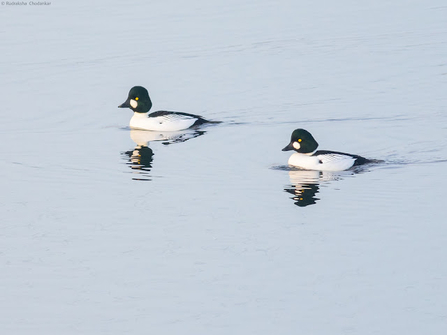
Two goldeneye
Photo credit: @rudraksh9
Goldeneye increased from four in the early part of the month to six on the 12th and seven on the 24th although numbers seemed to fall again towards the year's end. But goosander remained scarce with what was presumed to be the same drake occasionally dropping onto the Wetlands with sightings on the 8th & 9th, 15th, 17th, 26th & 29th. Four shelduck had arrived by the 9th but, given the weather to come, must have wondered why they did not stay on the coast longer.
A colony of yellow-legged gulls
Photo credit: @rom_lon
It was, however, another excellent month for gulls with the 17th proving a red-letter day for larophiles with an adult yellow-legged and two caspian - an adult and a 1W - on the north side. The yellow-legged gull was still on Lockwood early next morning with it or another on the 24th while caspian gulls including a smaller 1W were also seen on the 19th & 21st.
If it was good for gulls, it was fantastic for waders. After just one species in November, seven were seen in one week as the snow-free edges of the reservoirs offered a haven for birds struggling to feed. The first sign of what was to come was when visiting birder IR found and photographed a jack snipe on the side of High Maynard on the 11th. It appears to be the first record of the species on the reservoirs since 2014 although it is regular, if still scarce, nearby on Walthamstow Marsh. Those who went to look for it were not surprised that it had disappeared given that it was found next to the path on a busy Sunday afternoon.
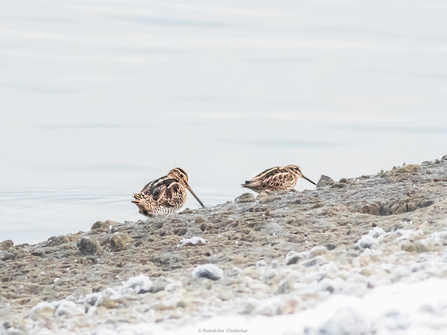
Common snipe (left) and jack snipe (right)
Photo credit: @rudraksh9
But there was no need for disappointment because two were found on 13th and an astonishing four next day, feeding on the side of High Maynard, Lockwood and No 4. At least two and probably more remained until the 17th with the last one on the last day of snow on the 18th. No one can remember an influx like this with the normal skulking species giving superb views. They were often accompanied by common snipe which also fed on the reservoir edges to enable comparison. They started being seen with the frost on the 9th with day counts increasing to as many as 20 on the 14th in the snow.
Snipe
Photo credit: @AMP
What made the discovery of the jack snipe on the 13th even more special was that it was spotted by birders walking along the path to get better views of a grey plover found by LB on Lockwood. The plover is the first on the reservoirs since 2018 when one flew through in the last freeze.
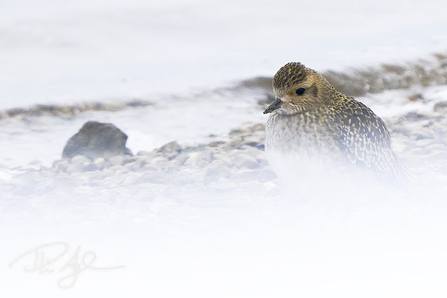
Golden plover
Photo credit: @OwlTurbot
In a remarkable 30 minute period, LB then went onto find a golden plover on the opposite Lockwood bank. It was the second record of the year with six seen flying north the day before. Unlike the grey plover which disappeared overnight, the golden plover stayed until the 18th. The final new wader of the month was a woodcock seen by DC to fly over the overflow channel onto Tottenham Marsh East on the 14th.
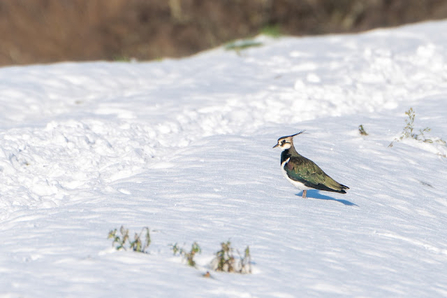
Lapwing
Photo credit: @AMP
Lapwing are an expected visitor during a freeze and the cold spell saw flocks moving overhead and resting on the water's edge. A single had been seen on 1st, 2nd and 4th but numbers built up with 20 on the 9th peaking at 65 on the 12th and still 15 - largely on Lockwood - on the 19th. Regular sightings of green sandpiper also started before the snow as the level in the flood relief channel dropped with singles on the 8th & 9th. But the freeze saw numbers rise on the reservoirs with two on the 12th and four together on High Maynard on the 15th. The snow on the 12th also saw the only common sandpiper of the winter so far pass through.
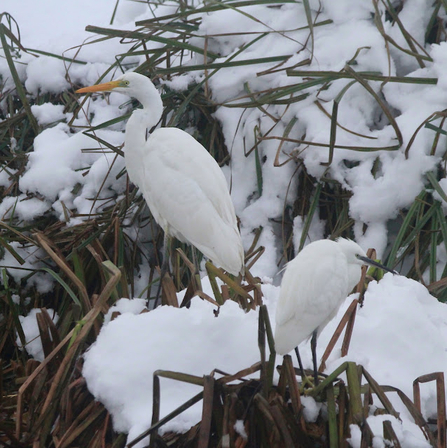
Great white egret
Photo credit: @Chris_Farthing
Throughout all this excitement, the great white egret remained at the Wetlands, often being seen on the island on East Warwick and, before the freeze, feeding towards the north end of High Maynard with little egrets. Two buzzards were seen on the 14th and a single red kite on the 12th while the snow also brought the third barn owl of the year on the 16th and the first one seen on the south side for years. Kingfishers continued to be showy with perhaps three pairs in residence. By the Wooley Hide at the bottom of No 3 and opposite the Ferry Boat pub garden on the north side were favourite sites but they were also being seen regularly near the Engine House.
Buzzard
Photo credit: @MLP
The Wetlands saw a remarkable movement for the site of skylarks on the first day of the snow. Thirty seven including flocks of 12 and 24 - double the number usually seen in an entire year - were counted on the 12th with one or two seen regularly until the 17th.
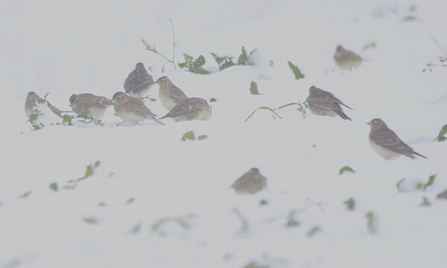
A flock of skylarks
Photo credit: @Chris_Farthing
The snow also displaced redwing with a count of over 200 on the the 14th and small flocks seen most days but fieldfare numbers remained in single figures. Small flocks of meadow pipits were also forced by the snow to hunt for food around the edge of the reservoirs with high counts of 30+ seen during the freeze.
Two siskins were seen on the 15th. In any normal year, a December wheatear would be the highlight of the month. So it is a sign of just how good December was that November's bird staying around Lockwood to the 5th is almost an after-thought.
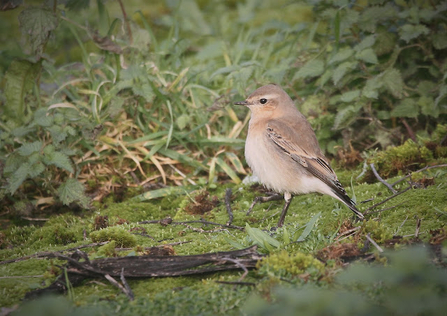
Wheatear
Photo credit: @Chris_Farthing
DB @porthkillier

Thank you to Leica Sports Optics for supporting our activities at Walthamstow Wetlands
Instagram: leicanature
Facebook: Leica.Sport.Optics
Twitter: LeicaBirding